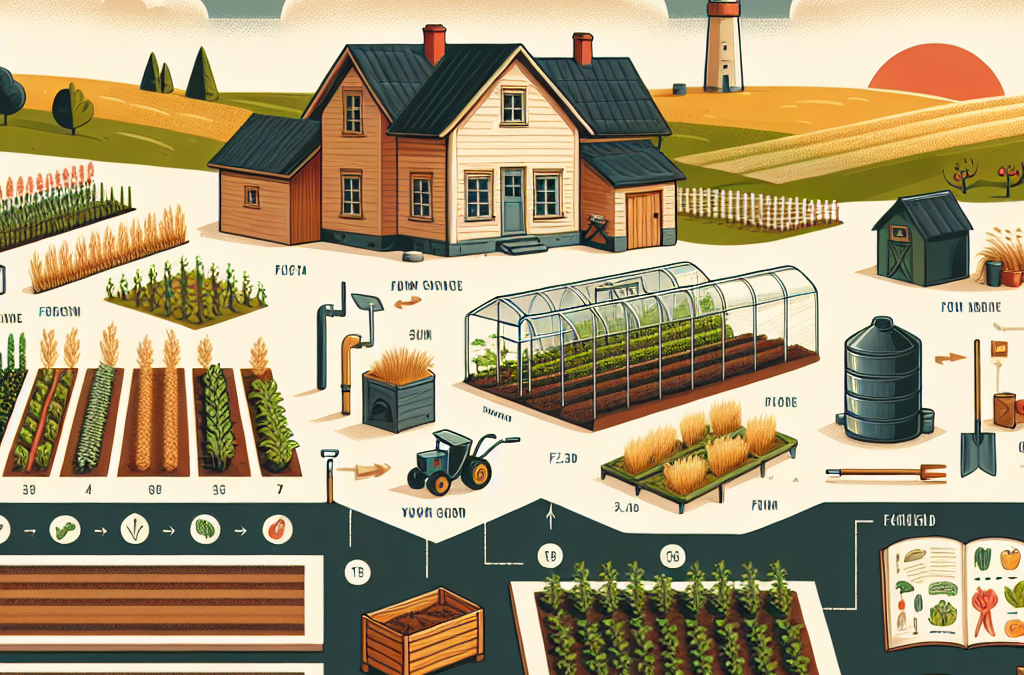Are you ready to start your own home farm? If so, this beginner’s guide is for you! Home farming has become increasingly popular in recent years as people seek out ways to live more sustainably and connect with nature. In this post, we will cover everything from choosing the right plants and animals to marketing your homemade products and earning extra income. Let’s get started!
Introduction to Home Farming:
Home farming involves growing crops and raising livestock on a small scale at or near your home. It can be done on even the smallest of plots of land, making it an accessible option for many people. By starting your own home farm, you can enjoy fresh produce, free-range eggs, and other delicious foods while also reducing your carbon footprint and supporting local agriculture.
Choosing the Right Plants and Animals for Your Home Farm:
The first step in starting your home farm is selecting the right plants and animals for your needs. Consider what types of crops grow well in your area and choose those that are easy to maintain and harvest. For example, if you live in a dry climate, consider planting drought-resistant crops like tomatoes or peppers. When it comes to raising animals, chickens are a great choice for beginners. They require little space and provide fresh eggs daily. You may also want to consider raising rabbits or goats for meat production.
Preparing Your Garden Space for Planting:
Once you have selected your crops and animals, it’s time to prepare your garden space for planting. Clear any existing vegetation and till the soil to loosen it up. Add compost or other organic matter to enrich the soil and improve drainage. Finally, lay out your plants and animals according to your plan. Make sure to leave enough room for each plant or animal to thrive without overcrowding.
Building a Chicken Coop and Raising Chickens:
If you decide to raise chickens, building a chicken coop is essential. A good coop should provide adequate shelter, ventilation, and protection from predators. There are many designs available online that you can use as inspiration when creating your own. Once your coop is built, it’s time to add some chicks! Choose healthy, active birds and keep them warm and protected until they feather out. Provide plenty of feed and water, and make sure to clean the coop regularly to prevent disease.
Harvesting and Preserving Your Homegrown Crops:
As your crops begin to mature, it’s time to think about harvesting and preserving them. Start by picking ripe fruits and veggies, being careful not to damage the plants. Use proper storage techniques such as canning, freezing, or dehydrating to extend their shelf life. This way, you can enjoy your bountiful harvest all year long.
Marketing Your Homemade Products and Earning Extra Income:
Finally, once you have produced high-quality crops and raised healthy animals, you might want to consider selling your excess products to others. Many cities now offer farmer’s markets where you can sell your goods directly to consumers. Additionally, you could create value-added products like jams, jellies, or soap using your homegrown ingredients. With hard work and dedication, home farming can become a lucrative source of income.
In conclusion, starting your own home farm requires planning, preparation, and commitment but offers numerous benefits including fresh produce, free-range eggs, reduced carbon footprint, support for local agriculture, and potential income opportunities. So why wait? Get started today and reap the rewards of home farming!
Related Content
- Harvesting Rainwater Sustainable Solutions for Your Homestead
- How to Start a Herb Garden at Home
- The Benefits of Homegrown Produce: Why You Should Consider Starting a Home Farm
- Transform Your Backyard into a Thriving Home Farm with These Simple Steps
- Organic Gardening Secrets To Optimize Your Garden’s Success





